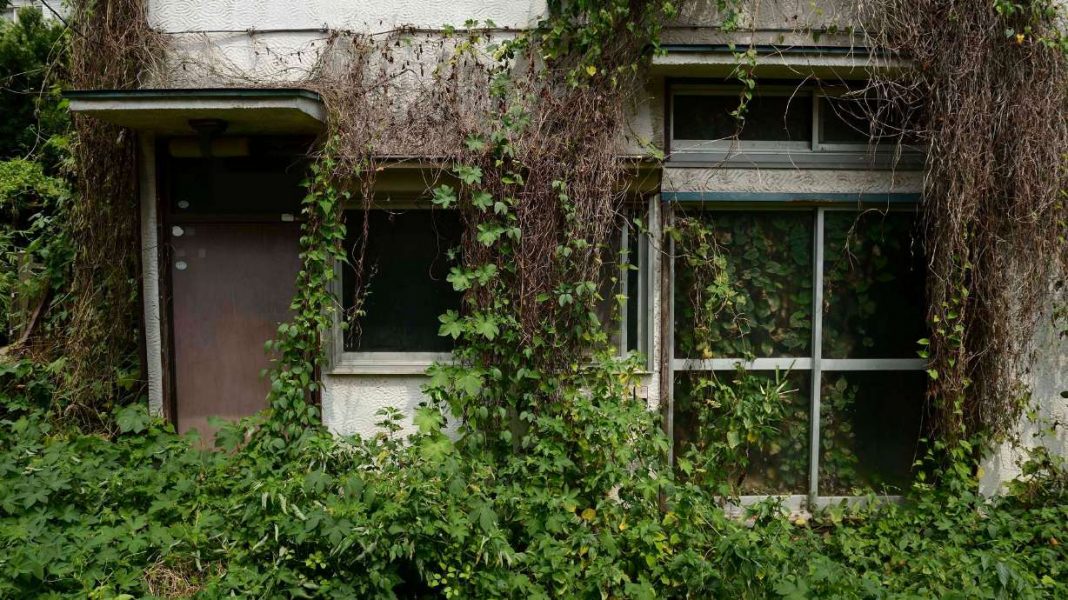TOKYO — Japan is currently grappling with a record-breaking surge in the number of unoccupied homes, which has now reached a staggering nine million. This figure is more than enough to accommodate every individual residing in New York City. This alarming trend is a direct result of the ongoing population decline in the East Asian nation.
In Japan, these deserted homes are referred to as “akiya”, a term typically associated with dilapidated residential properties located in the countryside.
However, the presence of akiya is increasingly noticeable in major urban areas like Tokyo and Kyoto. This poses a significant challenge for the Japanese government, which is already struggling with an aging population and a concerning decrease in annual birth rates.
“This is a clear indication of Japan’s dwindling population,” commented Jeffrey Hall, a lecturer at Kanda University of International Studies in Chiba. “The issue isn’t about constructing too many houses, but rather the lack of people to occupy them,” he added.
As per data gathered by the Ministry of Internal Affairs and Communications, approximately 14% of all residential properties in Japan are currently vacant.
This figure includes secondary residences and homes left empty for various reasons, such as owners temporarily relocating overseas for work.
Not all these properties are left to decay like traditional akiya. However, the increasing number of such homes presents a variety of challenges for the government and local communities, experts informed CNN.
These challenges include hindering efforts to revitalize deteriorating towns, potential hazards due to lack of maintenance, and increased risks for rescue workers during disasters in a country prone to earthquakes and tsunamis.
The Dilemma of Excessive Homes
Akiya are often inherited through generations. However, due to Japan’s declining fertility rate, many homes are left without an heir or are inherited by younger generations who have migrated to cities and see no value in returning to rural areas, experts informed CNN.
Some homes are also stuck in administrative limbo as local authorities are unable to identify the owners due to inadequate record-keeping.
This makes it challenging for the government to rejuvenate rapidly aging rural communities and hampers efforts to attract younger individuals interested in alternative lifestyles or investors looking for a good deal.
Due to Japan’s tax policies, some homeowners find it more cost-effective to retain the property than to demolish it for redevelopment.
Even if owners are interested in selling, they may face difficulties in finding buyers, stated Hall, from Kanda University.
“Many of these homes lack access to public transportation, healthcare, and even convenience stores,” he explained.
While trending videos showcasing people, primarily foreigners, buying cheap Japanese homes and transforming them into chic guesthouses and cafes have gained popularity on social media, Hall cautioned that the process is not as straightforward as it appears.
“The reality is that most of these homes are unlikely to be sold to foreigners. The administrative work and rules involved are not easily navigable for someone who isn’t fluent in Japanese,” he said.
“These homes won’t be available for cheap.”
The Issue of Declining Population
Japan’s population has been on a downward trend for several years. As of 2022, the population had decreased by over 800,000 from the previous year, standing at 125.4 million.
In 2023, the number of new births dropped for the eighth consecutive year, hitting a record low, as per official data.
Japan’s birth rate has been consistently around 1.3, significantly lower than the 2.1 required to maintain a stable population. Just last week, Japan’s Ministry of Internal Affairs and Communications reported that the number of children under the age of 15 had decreased for the 43rd consecutive year, reaching a record low of approximately 14 million as of April 1.
Consequently, the issue of excessive homes and insufficient people is likely to persist for the foreseeable future.
Yuki Akiyama, a professor from the faculty of architecture and urban design at Tokyo City University, mentioned that vacant homes have caused problems in the past, such as after the 7.5 magnitude earthquake that struck the Noto Peninsula in the central prefecture of Ishikawa in January.
The area affected by the earthquake had a high number of vacant homes, which posed a threat to residents during the disaster and challenges for post-earthquake reconstruction.
“In the event of an earthquake or tsunami, there is a risk that vacant homes will obstruct evacuation routes as they collapse and get destroyed,” he explained.
After the earthquake, authorities faced difficulties in deciding which damaged properties they could clean up due to unclear ownership, creating “an obstacle for reconstruction,” Akiyama said.
In other rural areas with a high concentration of vacant homes, akiya have hindered development, the professor added.
With these properties remaining untouched, “The value of the area will decrease because it is a place where properties can’t be bought and sold properly, and large-scale development can’t be carried out,” he said.
“People will perceive that this place has no value, and the real estate value of the entire area will gradually decrease.”
Akiyama has developed an AI program to predict the areas most susceptible to vacant homes. However, he emphasized that the problem isn’t exclusive to Japan — it has been observed in the U.S. and some European countries.
Nevertheless, he stated that Japan’s architectural history and culture make the situation particularly severe there.
Homes in Japan aren’t valued for their longevity, and unlike in the West, people don’t typically appreciate living in historical buildings.
“In Japan, the newer the house, the higher the price it sells for,” he concluded.




I agree with the concern about Japan’s 9 million empty houses. It’s a critical issue that needs to be addressed, especially in the face of an aging population.
hello there and thank you for your information – I have definitely picked
up something new from right here. I did however expertise several technical issues using this web site,
as I experienced to reload the website many times previous to I could get it
to load properly. I had been wondering if your hosting is
OK? Not that I am complaining, but sluggish loading instances
times will very frequently affect your placement in google and could damage your high quality score if advertising and marketing with Adwords.
Anyway I am adding this RSS to my e-mail and can look out for a lot more of
your respective exciting content. Ensure that you update this again soon..
Lista escape roomów
I was examining some of your blog posts on this website and I think this web
site is real instructive! Continue posting.?